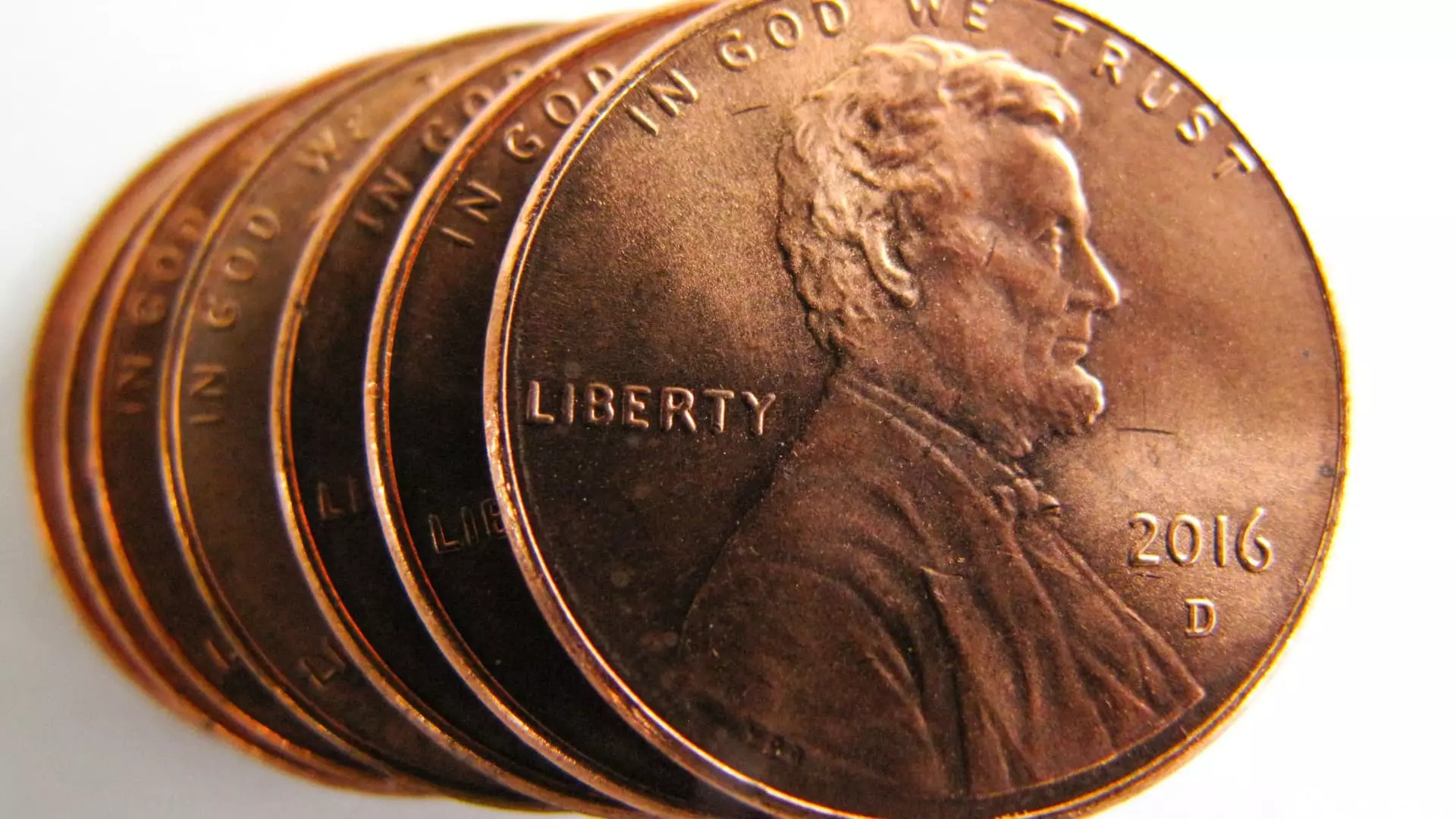As society grapples with economic realities, the ascendant narrative surrounding the U.S. penny has taken a decisive turn towards extinction. The recent announcement from the U.S. Treasury regarding the cessation of penny production marks not just a fiscal decision, but a significant cultural milestone in America’s relationship with money. The decision to halt minting pennies is a judicious move aimed at curtailing government waste, a persistent issue that continues to plague taxpayer dollars at large. With production costs soaring to 3.69 cents per coin, a fact that’s all too easy to overlook in daily transactions, the penny has become an anachronism—an artifact of an era that is simply not sustainable in today’s economic climate.
The Price of Change
When lawmakers, notably Senator Mike Lee, echo the sentiment that “no private business would produce something at a 4x loss,” they illuminate a critical flaw in how we perceive currency and its inherent value. The decision to shutter penny production could ultimately save the government an estimated $85 million annually. While this figure may appear trivial in the vast sea of a $6.8 trillion budget, it serves as a potent reminder that even small savings add up—a principle that resonates deeply in the discourse surrounding fiscal responsibility. Many may argue that the loss of pennies will inadvertently push businesses and consumers towards a rounding practice that benefits some sectors but could pose challenges to others, especially in lower-income communities where every cent counts.
A Symbolic Shift in Values
The discontinuation of the penny transcends mere economics; it represents a broader societal shift. In many ways, choosing to abolish the penny compels us to reevaluate our attachment to currency as a symbol of value, worth, and even pride in a nation that celebrates its founding principles. Countries like Canada and Australia have successfully navigated similar transitions without severe economic repercussions, suggesting that America too can adapt. As we embrace digital forms of currency, such as mobile payments and cryptocurrencies, the penny stands more as a hindrance than a help, echoing outdated practices in an age of innovation.
Rounding the Corners
It is clear that while some may mourn the loss of this small coin, the larger picture is one of practicality and progression. Rounding prices to the nearest nickel may at first feel foreign, perhaps even anti-consumer. Yet, the reality is that the penny’s presence has long since ceased to reflect any true economic logic. Adopting a rounding system while gradually adjusting to a penny-less society may mitigate initial backlash among consumers. Retailers and financial institutions can prepare for this transition, ensuring that the inconvenience does not become a point of contention.
In the end, the phasing out of the penny is not merely about budgetary savings; it symbolizes a progressive approach toward a more efficient monetary system. The U.S. is taking a much-needed step towards financial pragmatism while opening the door for future economic reforms that resonate with the realities of today’s fast-paced world. As we bid farewell to the penny, we should welcome the transition as part of a broader movement towards fiscal responsibility and modernization.

